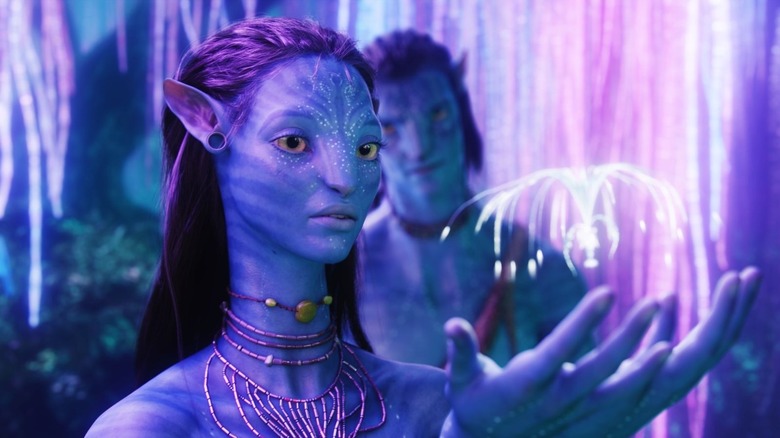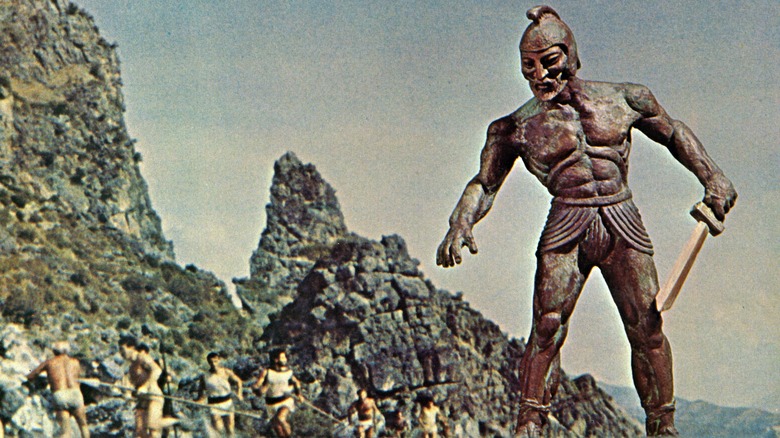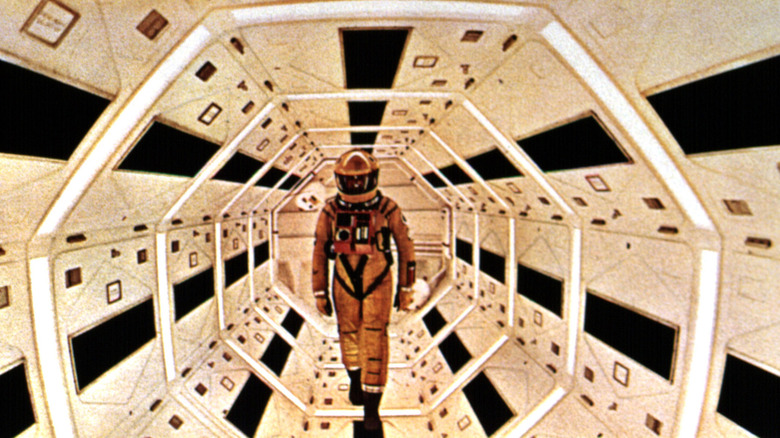Avatar Was James Cameron's Tribute To A Legend Of VFX Filmmaking
Anyone who watched "Avatar" in the cinemas during its release in 2009 will agree that the epic sci-fi film is a transformative experience. James Cameron's labor of love had been conceived over a decade and achieved a groundbreaking level of visual effects that hadn't been seen in Hollywood yet. The film, set in the distant future, told the story of human colonization on a lush jungle moon known as Pandora, which possessed unobtainium, a highly valuable element that could solve a major energy crisis on Earth.
Cameron displayed the lore of Pandora through its culture and traditions, its alien flora and fauna, and the people who lived there: the indigenous humanoid-resembling population of the Na'vi. While Cameron and his crew used CGI imagery and revolutionary motion-capture techniques to achieve the Na'vi visuals, the film's special effects were a tribute to a visionary of stop-motion animation.
James Cameron hoped to capture the 'wonder' he experienced as a child
James Cameron's politically charged film is spellbinding for a multitude of reasons. While "Avatar" tells a moving story, the film also achieved a lot in its technical aspects through its complex level of cinematography that made the sweeping, colorful landscapes of Pandora possible. Cameron was inspired by the works of Ray Harryhausen, a pioneer of stop-motion animation, and paid him tribute through the film.
With films such as "Jason and the Argonauts" and "One Million Years B.C.," the special effects legend inspired a generation of filmmakers, including Cameron, who, with "Avatar," hoped to capture the kind of "wonder" he experienced as a kid watching Harryhausen's films. In an interview with FilmFestivals.com, Cameron noted that he wanted to do something "beyond the ordinary" with "Avatar":
"I've made other big-budget Hollywood action movies that were not transformative, so there was an evolution to it and a consciousness about 'Avatar' — that we were going to do something beyond the ordinary."
The legendary filmmaker went on to list his goal for the film, to replicate the visuals as seen in the fantasy film "Jason and the Argonauts" and others.
"I didn't know how it was done, I couldn't begin to guess how it was done. But I didn't care, whether it was "Mysterious Island" or "Jason and the Argonauts" with the skeletons coming out with swords and fighting. I didn't know what stop-motion animation was, it didn't matter."
Cameron was also inspired by this film
When James Cameron watched Stanley Kubrick's "2001: A Space Odyssey," he was in awe of the visual effects work done by maestro Douglas Trumbull. Cameron illustrated how the movie inspired him to become a filmmaker and said he had an "army" of creatives working with him to capture the same magic for "Avatar":
"... When I saw '2001: A Space Odyssey,' I could not begin to comprehend how that movie was made. But it mattered enough to me to make me want to find out. That's'what actually set me down the path of being a filmmaker, trying to crack the code of that movie. It had that same sense of wonder for me, whether it was 'Close Encounters' or 'Star Wars.' Those were films in terms of visual filmmaking.
"But it's one thing to set out to make a film like that, it's another to actually pull it off. I had to martial an army of great imaginations to work toward this film. I think people have to let go of this 'auteur' theory — that I created everything in this movie — and embrace the idea that this is from an amazing talented group of people. These people did their best as animators and designers to help create this huge hallucination."
"2001: A Space Odyssey" is a profound cinematic experience that heavily influenced modern pop culture. The film touched on the themes of artificial intelligence vs. mankind and is fondly remembered for its acclaimed camera work that convincingly documented what traveling and living in space is like. "Avatar" follows up on this technical idea and was rooted in authenticity, making the story a compelling, realistic viewing experience. It is the most successful film in the world, after all.


